We’re continuing our visit of the Plantaže winery with a third cellar, and while I understand that you might start experiencing cellar fatigue, this one has a very special history. It’s called Šipčanik, after the hill under which it’s located, because it’s in a cave. A bit like some of the most famous wineries in Moldova (see my posts here and here)… except that this cave used to be a military base (and the wine is much better).
Like other countries in the former Communist Bloc, Yugoslavia had a fondness for hiding stuff under hills, dubiously reasoning that if the enemy can’t see it from the sky, then the enemy can’t find it (I suppose that the enemy would be too stupid to draw any conclusions from the presence of a road that mysteriously leads to a deserted hill and then stops abruptly). So Šipčanik, a little mount in the middle of what was then wasteland just outside of Podgorica, inconspicuously became a secret aircraft base, its natural cave transformed into a long tunnel.
Not everybody was fooled, though. In April 1999, during the NATO bombing, the Šipčanik base “hid” 26 jet fighters, the entire air force of the area. As the planes were getting ready for takeoff, waiting in line, a bomb fell in front of the cave. The heat from the blast ignited the fuel in the first plane, causing it to explode. The explosion then propagated along the line of jet fighters, and all of them were gone in a single hour, creating what my host, a native Podgorican, described as “some kind of earthquake in Montenegro” which he remembers well to this day.
After that fiery event, the cave fell into disuse until Montenegro became independent in May 2006. In a precocious demonstration of wisdom, the new state decided that it needed wine more than it needed a James-Bond-style military base. Plantaže, which is half-owned by the state, acquired Šipčanik and spent over 2 million euros converting the cave into a wine cellar in 2007. There is no winemaking equipment; the cellar is used for maturing the company’s premium wines. With its length of 356 meters, height of 7.5 meters, and generous width of approximately 13 meters, it also makes for a badass event space – there’s even a leftover military briefing room where officers once discussed war tactics.
Thanks to a nearly constant temperature of 16-18 degrees Celsius (60-65 Fahrenheit) and humidity of 70-80%, the cellar offers pretty much ideal conditions to store wine. The black stains that you see on the walls in some of the pictures are a natural fungus. If you look carefully, you’ll also notice that parts of the walls are exposed rock, corresponding to the original natural cave (reserved strictly for aging wine), while the man-made parts are covered with industrial concrete. We’re hearing that there are plans to construct a “wine village” on top of the hill in the coming years. I’m concerned this might turn the place into a James-Bond-villain-lair meets Mickey-Mouse-attraction, but we’ll see!
Šipčanik seems like the exact opposite of Plantaže’s “new cellar” (which is all about wine production and large volumes; see my previous post here). In fact, except for the setting, it shares many characteristics with the “old cellar” (which is also focusing on premium wines; see here). It has all the bells and whistles of the visitor-friendly winery: a store selling the company’s production at unbeatable prices, plenty of tasting space with tables made of repurposed barriques, a wine library with a capacity of 28,000 bottles (some of them over 40 years old), and lots and lots of barrels, filled with 2 million liters of wine.
For most of the cellar’s length, the walls are lined with large casks (from the same manufacturer as the ones we saw at the old cellar), the bottom casks boasting a capacity of 5,000 liters, and the casks on top half that size. Wherever there aren’t any tasting tables, smaller barriques are also stacked in the middle of the vault. See the yellow line on the ground? Supposedly, back when this was a military base, a similar line was used to guide the airplanes inside the curved tunnel. Plantaže decided to reproduce it for a bit of additional military color. I could suggest adding actors dressed like Air Force generals, but this might be in poor taste.
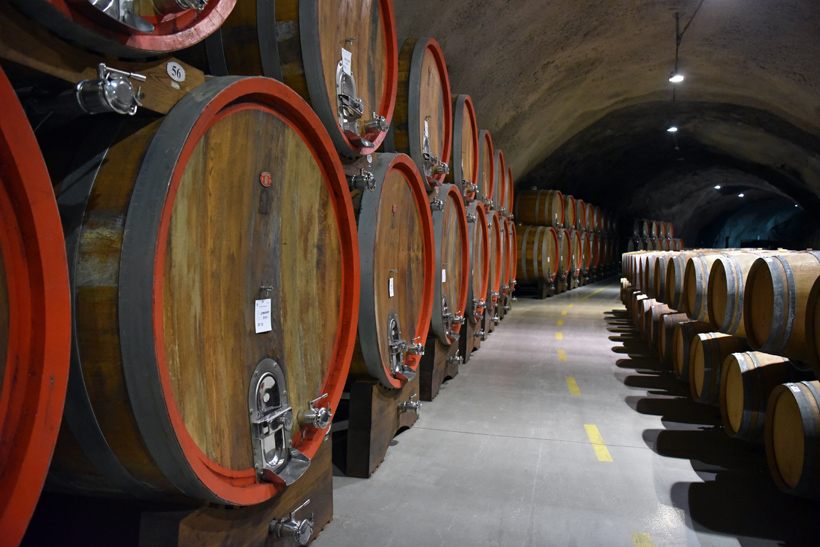
In the center of the tunnel, there’s a 3D model of the vineyard and its environs. We take a closer look at the different parcels of the large Ćemovsko Polje, situated just a couple of kilometers south of central Podgorica (FYI north is more or less in the top left corner of the picture below). Before it became a vineyard, the whole area was a wasteland, as people didn’t have a clue that there was an underground reservoir of water on-site that would allow easy irrigation. Discovering the groundwater changed everything, and in two decades Ćemovsko Polje was transformed into the winery’s only vineyard, and Europe’s largest. The field is divided by the Cijevna River, one of five rivers that flow through Podgorica and home to Montenegro’s Niagara Falls (in the approximate center of the picture). In the bottom left corner, you can see the Podgorica airport. The new cellar is the red flag in the top left, and the old cellar is a bit further back in that same corner. The area on the far bank on the river that’s not colored green doesn’t belong to Plantaže. According to Google Maps, it’s occupied by a few other things such as a tiny winery called Vinarija Cem and by a Coca-Cola plant – those barbaric Americans. Just north of that, a darker green spot represents the 65 hectares of the peach orchard, and the lightest green area is where the rootstock is grown, mainly for use by the Plantaže company itself, though it’s sometimes sold to small private wineries. As for Šipčanik, it’s the hill on the far right just at the periphery of the vineyard. Further east, we see the limestone foothills of the Albanian Alps, which contribute to making the area a karst valley. Lake Skadar and its national park spread about ten kilometers south, followed by the Adriatic Sea some twenty kilometers further, so the vineyard receives the influences of both Mediterranean and continental climates.
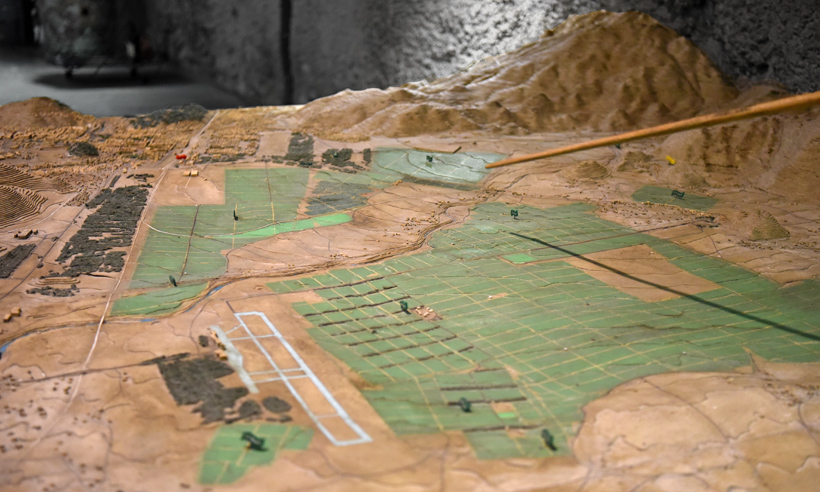
Ćemovsko Polje is divided into a dozen or so parcels, each with its own soil, orientation, and cultivation methods, the results of a lot of research. For example, the are called “Nikolj Crkva” (St. Nicholas Church in Montenegrin) is pretty unique, as this is where Krstač is grown, and Plantaže is supposedly the only commercial winery to produce this indigenous varietal. As I’ve mentioned before, about 70% of the harvest is manual, performed in the evening or early morning when the temperature is cooler. For some of the parcels – especially the oldest ones, by the airport, where the vines are 35-40 years old – the rows are too narrow for the machines, so hand-picking is the only possibility.
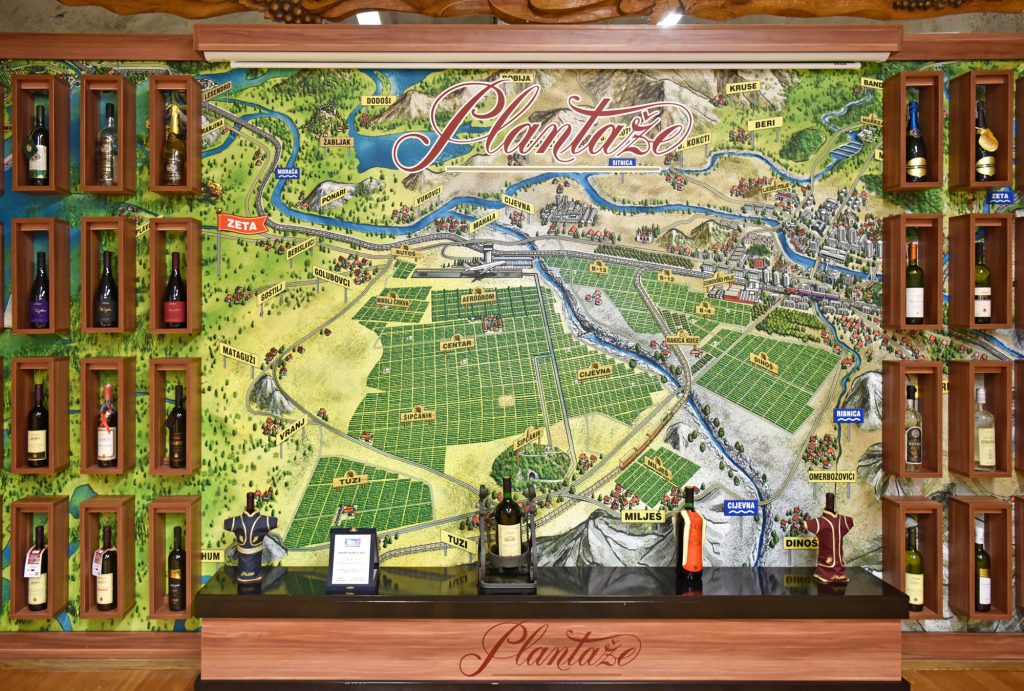
Time to taste some more wines! I can’t realistically try all 28 varieties of grapes produced by Plantaže; at Šipčanik my hosts have preselected 3 wines of particular significance. (Should you be interested in exploring Monetenegrin grapevine varieties in greater depth, you can find a good article here.)
The first wine of the tasting is Luča (“ray of light” in Montenegrin), first launched for the combined 50th anniversary of Plantaže and 200th birthday of the famous Petar II Petrović-Njegoš. This is a blend of Pinot Blanc, Sauvignon Blanc, and Chardonnay, in roughly equal amounts, aged in stainless steel for 8 to 12 months (plus some barrel aging for part of the Chardonnay). I’m not sure of the vintage, unfortunately, but the nose exhibits peach, pineapple, and some citrus fruit in the background. A nice refreshing wine overall.
Luča is intended to be a great wine to pair with food, not only pasta, risotto, seafood, and white meat as you might expect, but also Montenegrin cheese and prosciutto, foods with which most people would more readily choose a red – and this is precisely what we’re being served now. The winery’s head sommelier, Miroslav Radojčin, explains to us that this is part of the winery’s strategy. Traditionally in Montenegro, Vranac rules: go to a restaurant, and maybe 90% of the patrons will be drinking Vranac. For a winery that produces 28 grape varietals this is rather limiting, especially since Radojčin believes that Ćemovsko Polje is a great terroir for the white grape varieties used in Luča. Another local tradition is to start meals with cheese and prosciutto. People naturally grab a bottle of Vranac to go with that, and then just stick to red (and Vranac) until the end of the meal. But what if they could be convinced to drink white wine with cheese and prosciutto instead? Clever salesmanship aside, the idea really has merit: as good a pairing as it may be, flavorwise, red wine isn’t refreshing and is therefore ill-suited to balance the saltiness of the charcuterie and cheese. In fact, Radojčin tells us that he’s heard from many different wine producers that white would go better with these foods. So, little by little, Plantaže tries to expand white wine’s market share, not only during the warm summer months but also in winter.
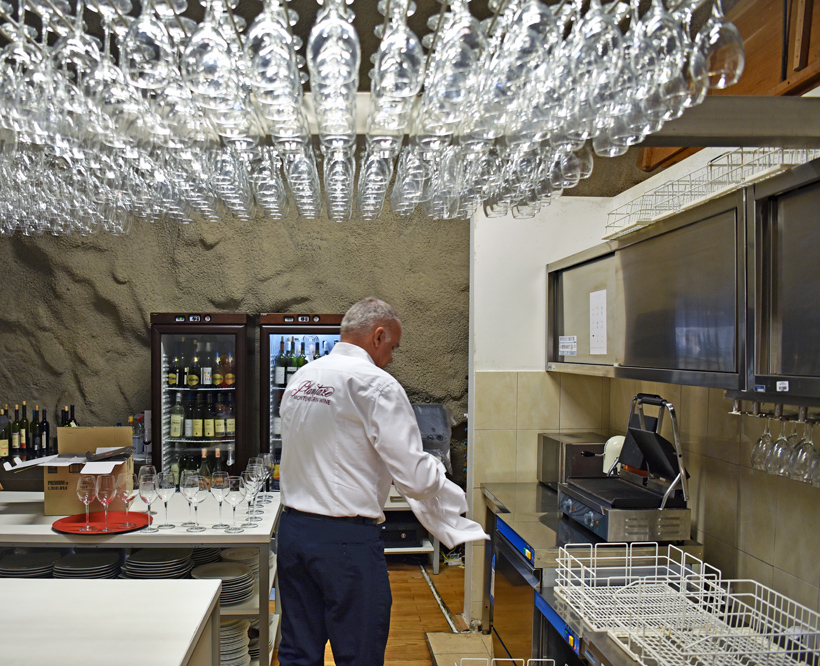
Next, we try the 2012 Epoha (“epoch” in Montenegrin), released for the 55th anniversary of Plantaže. This vintage is a blend of approximately 65% Cabernet Sauvignon and 35% Merlot, aged for four years in the old cellar’s best French oak barrels, then one more year in the bottle. It has very mild tannins. One detects mostly dark berries (blackberries and blueberries) on the nose, and notes of roasted coffee and chocolate in the aftertaste, coming from the wood. That being said, despite the four years in barrels, this wine doesn’t exhibit overpowering flavors from the wood. By being kept in larger casks, the wine could develop more of those jammy and berry aromas characteristic of warm-climate Cabernet Sauvignon. A very good wine, selling for the ridiculously low price of 7 euros!
It’s very rare in Montenegro to find a red wine without Vranac, and the Epoha blend was a great step for Plantaže, reflecting their desire to diversify production. Once again, particular attention is paid to food pairings, as this represents a good way to encourage people to try new wines. The winery currently has over thirty different labels and regularly medals at international wine competitions. The 2012 Epoha alone has won 6 medals, becoming the first Plantaže product without Vranac to win gold medals, for example at AWC Vienna in 2018.
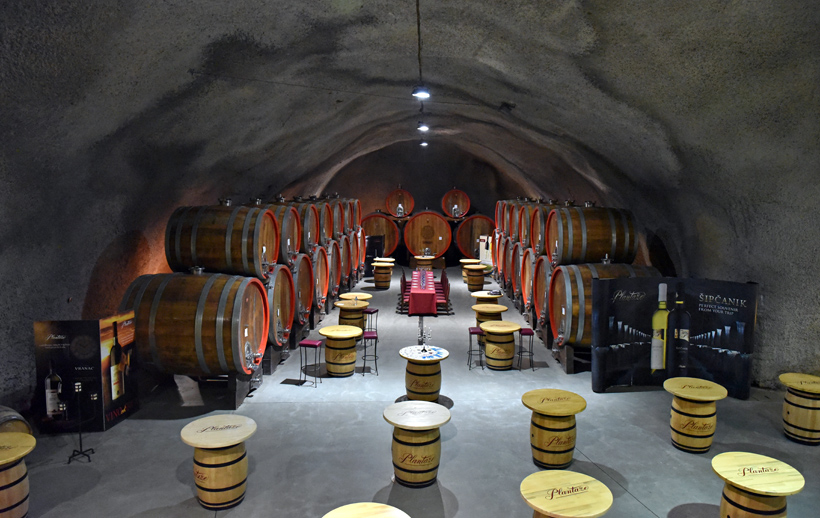
If you’ve read this far, you won’t be surprised to learn that the third wine to be poured is a Vranac. The tasting follows the same order that Radojčin would like to impart to his customers, and we’re now going to the classic. Vranac Pro Corde is the best known and most sold red wine in the whole of former Yugoslavia. In fact, with 1 million bottles purchased every year, Plantaže sells more Pro Corde than all its other reds combined! You’ll be hard-pressed to find a restaurant or a wedding party in Montenegro without it. In fact, this is the first wine I tried when I arrived in Montenegro, and I had a glass of it with my meals almost every day!
Pro Corde, meaning “for the heart” in Latin, is prepared according to a special technology developed in the early 1990s: made with 100% Vranac, it’s the result of a longer maceration with the grape skins and seeds, during which additional Vranac seeds are added to increase the levels of antioxidants, allegedly good “for the heart.” The fermented juice is then aged for two years, 35% in wooden barrels (some of which we see at Šipčanik) and the rest in big stainless steel tanks. The final product has an intense ruby red color, sometimes with those purple nuances on the edges that are characteristic of Vranac. On the nose, there’s plum, cherry, and some dark berries, and that same fruitiness is also found on the palate, with a moderately lingering finish. There are more tannins here than in the Epoha, but they’re still well balanced. This is a straightforward, well-made wine: nothing exceptional about it, but it’s very enjoyable (Wine Spectator gave a rating of 87 to the 2009 vintage). Plantaže judiciously positions Pro Corde as an everyday wine, and at 5 euros a bottle, it’s one of your best picks at the supermarket in Montenegro. It’s also a good choice at $11-13 on the American market.
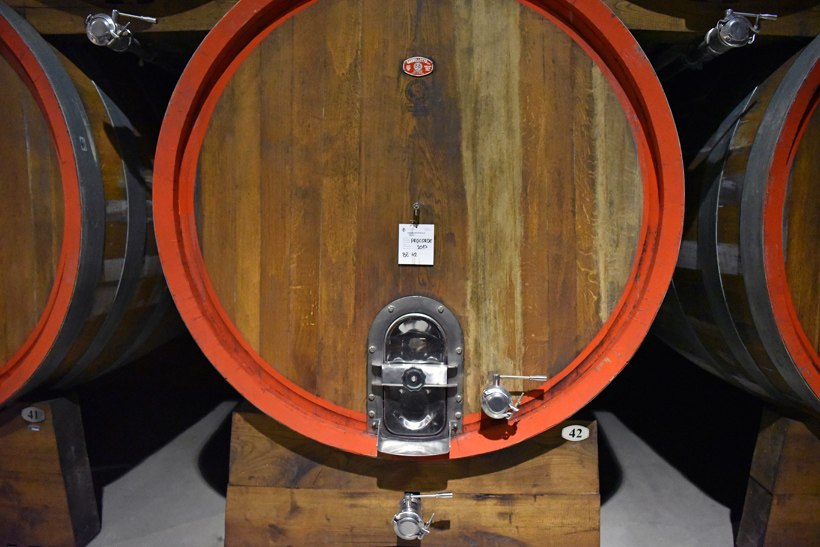
Speaking of international markets, Plantaže wines are available in over forty countries, so there’s a good chance you can purchase a bottle wherever you are. 20-25% of the production stays on the Montenegrin market, another 30-35% goes to neighboring countries, and the remaining 40-50% is exported all around the world. In the US, there are distributors in Chicago and New York (where there are large Montenegrin communities), and you can find the Pro Corde, as well as the Krstač, the Cabernet Sauvignon, the Vranac Barrique, and even the company’s rakija. Taken all together this makes for a good sampling of Plantaže’s traditional products but doesn’t include anything from the top of the line. If you’re in New York, reserve a table at Kafana, and you’ll find most of the same on the wine list (some even available by the glass).
As we finish our glasses, the conversation veers toward the history of winemaking in Montenegro (which I’ve briefly mentioned here). The country has a very old winemaking tradition, but a lot of people don’t realize this because the region, embroiled in wars for centuries, had more important matters to deal with. Yet in the 19th century, during the Habsburg Monarchy, much of the land was covered with different grape varietials, and there was an understanding of which varietals were best suited for each region. Then in the 20th century, the two world wars and the rise of communism dealt fatal blows to many of the wineries. Wine’s primacy decreased, to the benefit of beer and rakija.
In the past couple of decades, part of the population returned to wine consumption. New private wineries have appeared, some of them following the aforementioned 19th century winegrowing schemes with great results. And veteran wineries like Plantaže work hard, making investments and growing their expertise, to make the best wines they can. “Come back in five years and you’ll taste even better wines,” promises Miroslav Radojčin.
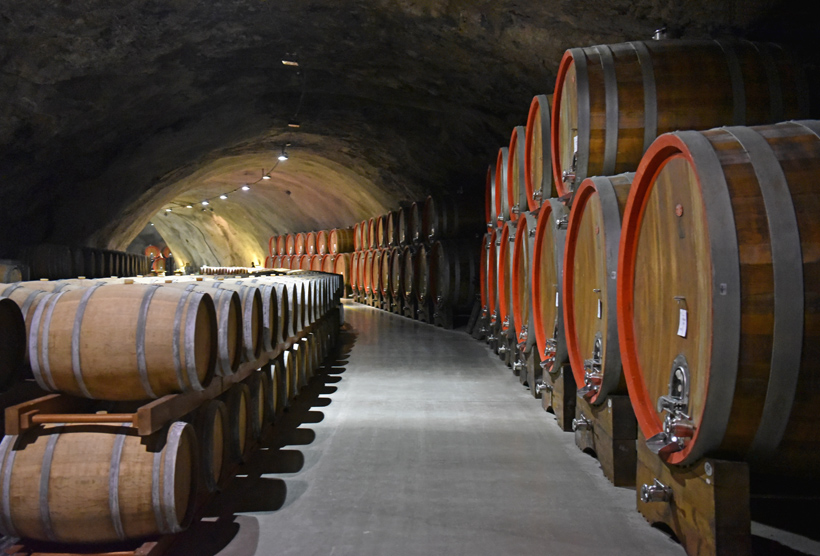
The visit goes on. We’re now headed to the Plantaže-owned restaurant Jezero on Lake Skadar, where a seven-course tasting menu with wine pairings awaits us. Expect some of the dishes to serve as inspiration for future Food Perestroika posts (in fact, I’ve already blogged about the cheese mousse with peach sauce). For now, here are some highlights from among the wines:
- Plantaže now produces several méthode champenoise sparklers – totally new products for the Montenegrin market, as sparkling wine consumption in Montenegro is very low. The Val brut, made with 60% Chardonnay and 40% Krstač, is the de facto single sparkler in the world made with Krstač. The Val rosé, on the other hand, consists of 50% Cabernet Sauvignon and 50% Grenache. If you ask me, they compare favorably to many of the non-vintage offerings from large Champagne houses.
- The Vladika is a blend of 80% Vranac, 10% Cabernet Sauvignon, and 10% Merlot, aged in oak barrels for two years. It’s one of my favorite reds from the whole tasting, and the international grape varieties perfectly complement the Vranac.
- The Medun, a red dessert wine, is unique in the region. It’s another Vranac, but each vine is limited to just 1 or 2 grape clusters, for maximum flavor concentration, and not harvested until early October. This wine reminds me a bit of Recioto della Valpolicella, though it’s not made the same way.
Our epic visit comes to an end. I’ve officially passed my wine saturation point some time ago, but how could I pass up the opportunity to get a little drunk on good wine?


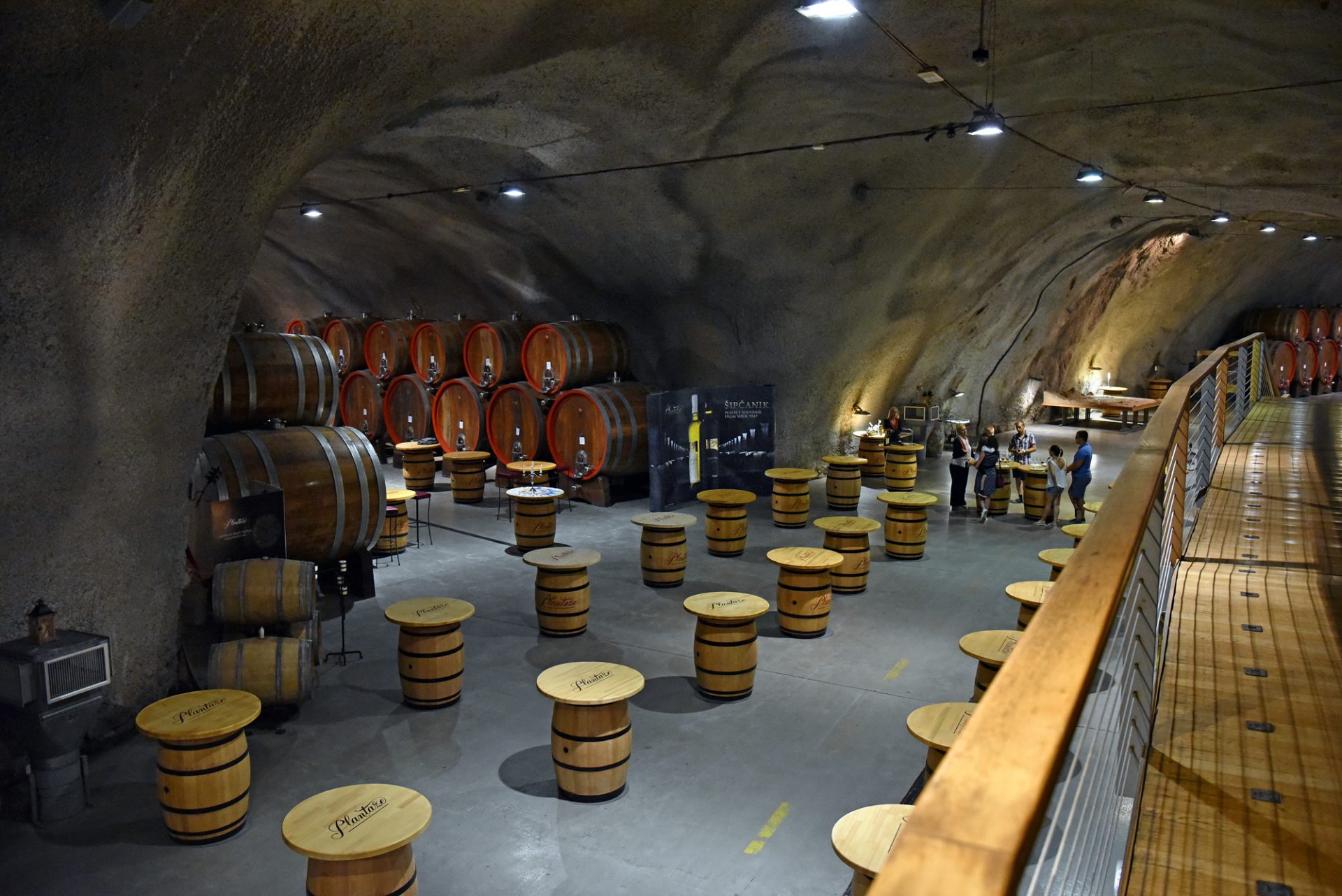
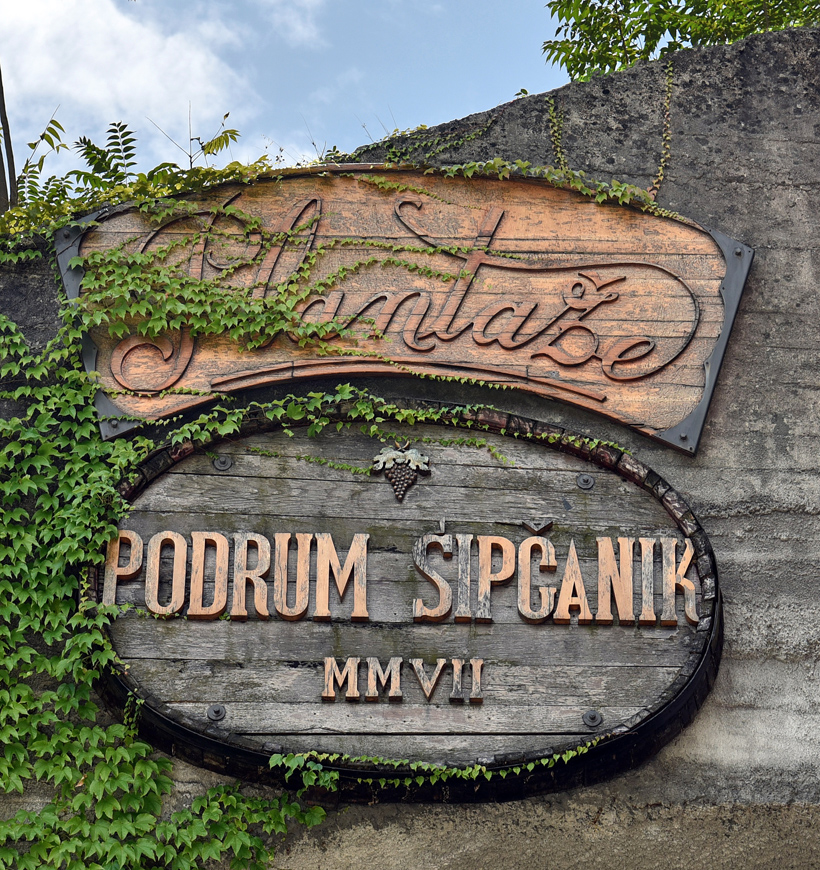
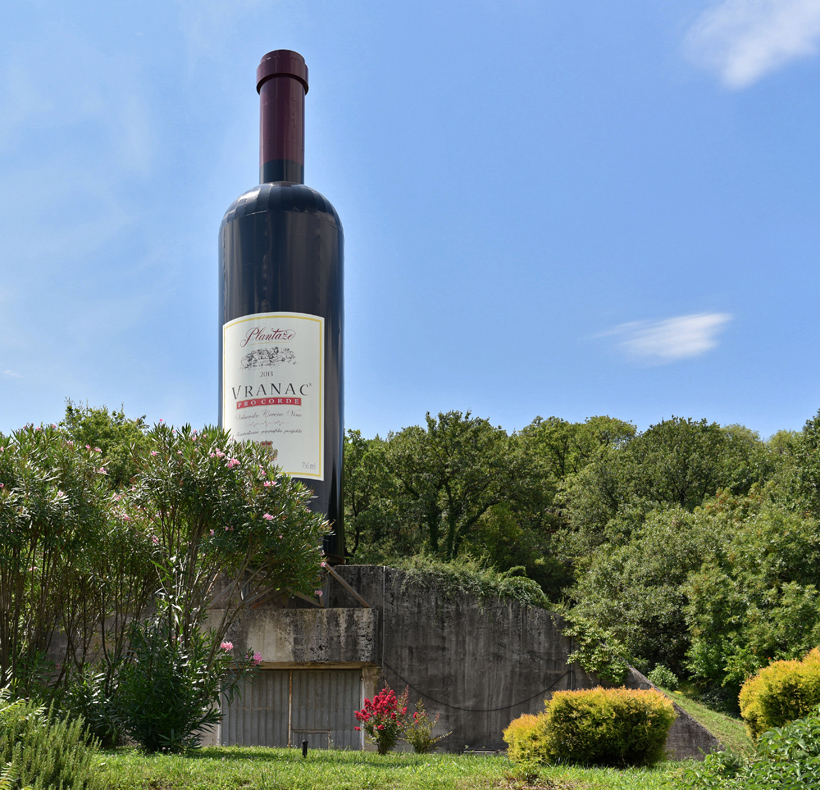
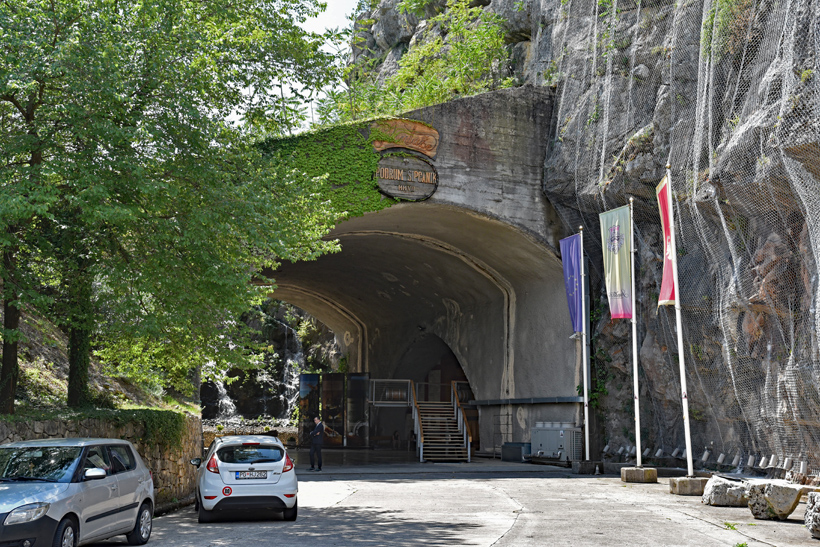

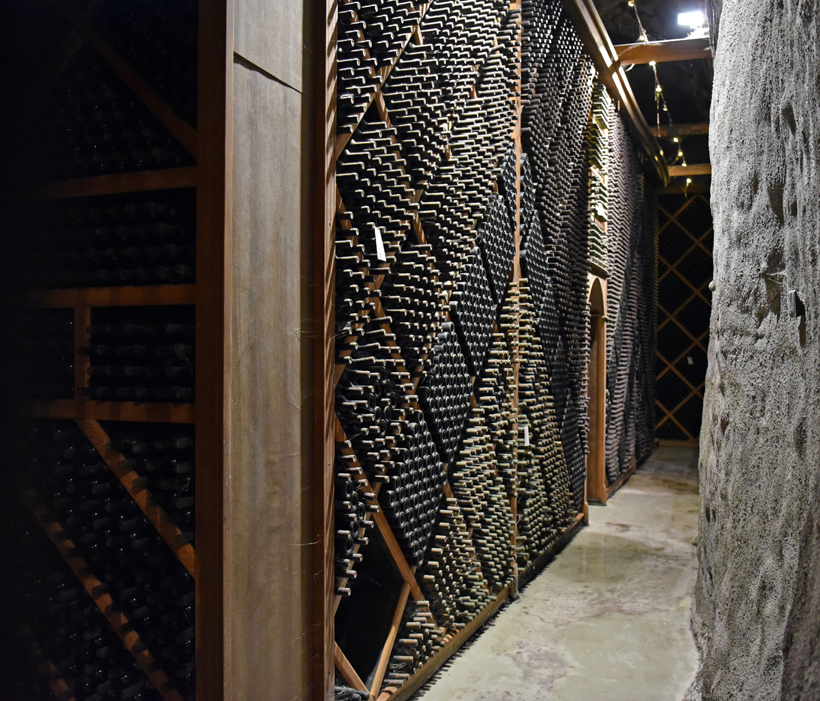
1 comment
i heard about it, first time reading about it. Thanks for sharing great knowledge.